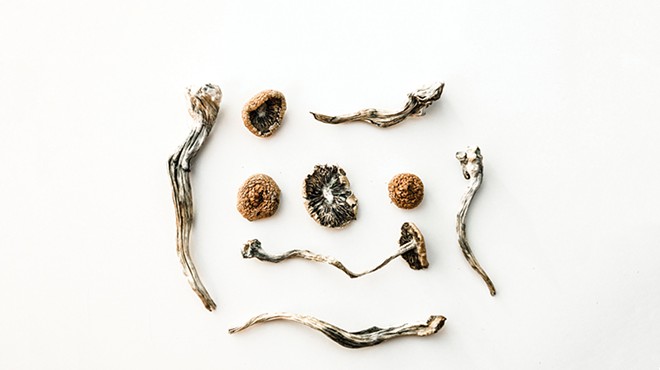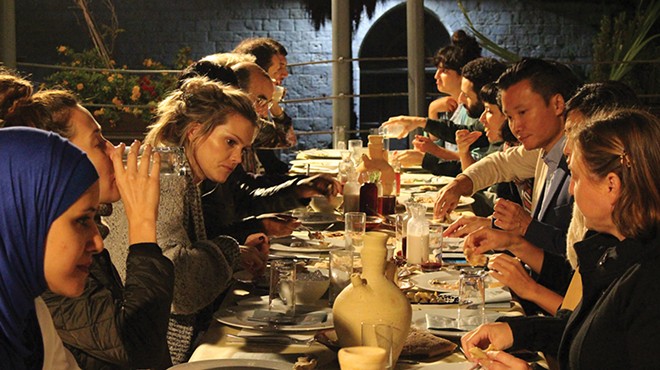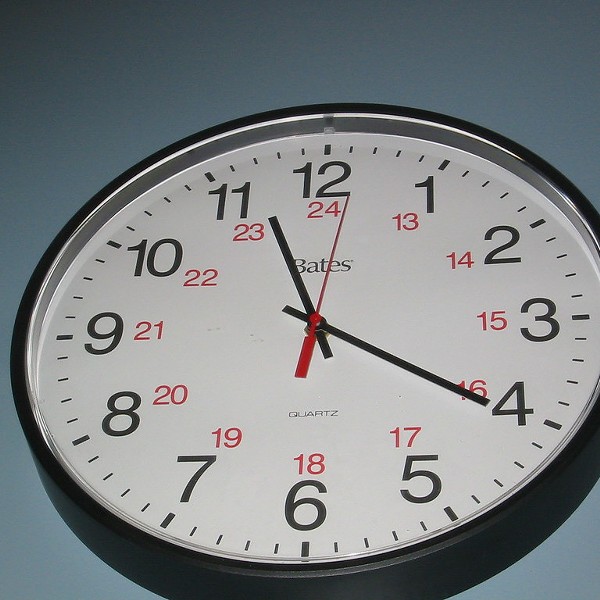Happy New Year, dear readers. Welcome to 2020, destined to be a memorable spin around the sun given all the predictable reasons. It's a leap year. (Tell me, what is it you plan to do with your one wild and precious extra day? I was going to suggest we all ditch work and watch the wheels of capitalism grind to a halt, but February 29 falls on a Saturday, so I'll probably just clean out the garage instead. #DomesticHeroism). I'm just guessing here, but odds are it's going to be the hottest year on record yet again. (Sorry, climate change deniers.) There's a presidential election (vote Putin!). And your humble editor turns 50.
But before surging ahead into the new decade, let's reminisce about a few of the remarkable pieces we published in 2019. Here's why: If you've actually taken the time to read this, you've chosen this piece of content over, literally, tens of billions of other pieces of content created at the same time—magazine articles, Netflix comedy specials, text messages, Facebook posts, Tik Tok videos, presidential tweets, podcasts, Jehovah's Witness pamphlets, and on an on—vying for your attention. To take just one small corner of the internet as an example: According to a study by Micro Focus ControlPoint, more than 4 million hours of content are uploaded to YouTube every day, with users watching 5.97 billion hours of YouTube videos each day. We are swept along on a raging cataract of content.
But not all content is created equal. As Jonathan Haidt and Tobias Rose-Stockwell noted in the December issue of The Atlantic ("The Dark Psychology of Social Networks: Why It Feels Like Everything Is Going Haywire"), there's content that was created yesterday and content that has stood the test of time. "Our cultural ancestors were probably no wiser than us, on average, but the ideas we inherit from them have undergone a filtration process. We mostly learn of ideas that a succession of generations thought were worth passing on. That doesn't mean these ideas are always right, but it does mean that they are more likely to be valuable, in the long run, than most content generated within the past month." In that spirit, I am resurfacing some of our pieces from the past year that are worth revisiting. Consider me a filtration process. They're all available at Chronogram.com and Therivernewsroom.com.
Immigration
In collaboration with The River, our journalism sister site, we spilled a lot of ink (and zeros and ones) covering immigration issues this year, beginning with a report in February on ICE crackdowns in the region. In March and April, we featured Michael Frank's reporting on ICE's detention of Luis Martinez. On January 16, the businessman was arrested outside his office in New Paltz and imprisoned at the Orange County Jail. Martinez, though born in Mexico, has spent most of his life in the US, building a business and raising his kids here. Frank's reporting included an extensive dive into Martinez's personal history, how it intersected with immigration law and enforcement, and the fear-filled lives of undocumented immigrants in the Hudson Valley. On June 16, after 153 days in detention, Martinez was released from custody after a judge ruled that the government had held him unlawfully, denying him due process.
In our November issue, Frank tackled the immigration piece from a different angle, profiling local immigration advocates in "A Helping Hand." It chronicled the efforts of the organizations fighting back against unjust federal policies targeting immigrants. The spirit of the piece is captured in the words of Father Frank Alagna, an Episcopal priest and cofounder of the Ulster Immigrant Defense Network: "To fail to resist is to be complicit."
Microdosing
In 2018, Michael Pollan's bestseller How to Change Your Mind: What the New Science of Psychedelics Teaches Us About Consciousness, Dying, Addiction, Depression, and Transcendence captured the public imagination by profiling the resuscitative efforts of a small group of scientists, psychotherapists, and "psychonauts" who were advocating for the therapeutic use of psychedelics in large doses. In our September issue, Health & Wellness editor Wendy Kagan reported on a grassroots microdosing movement in our region. More subtle than tripping, microdosing generally acts like a mood enhancer; the idea is to take a miniscule dose every few days to experience its benefits. For the Hudson Valley residents Kagan spoke to, it was a game-changer, "Honestly, from day one, it completely changed everything. I stopped having bad days, physically and mentally," artist Emily Ritz said. "The day after I started microdosing, I would hop out of bed in the morning early to go hike and swim. I felt so energized. I was living my fantasy." So, who's got the blotter?
Palestine Hosting Society
As part of Bard College's "No Wall Remains" festival, which centered on the subject of borders, in November Mirna Bamieh brought her food/performance art project Palestinian Hosting Society to Murray's restaurant in Tivoli for three days of food and conversation. Menu of Dis/appearance presented dishes from Palestinian cities and villages, as well as others that were preserved in Palestinian refugee camps outside Palestine and encompass the intergenerational food habits and cultural memory of the Palestinian diaspora. The suppressions of a food source, and the cultural implications that go along with it—the erasure of customs and collective memory surrounding an indigenous cuisine—are Bamieh's focus. "Because of the political situation, as Palestinians we are made to feel like guests in our own country, we cannot move around freely," she told Peter Aaron. "With the tables, we are taken out of the passive role. We become the hosts." At a time when the plight of Palestinians seems largely forgotten in this country—and conditions continue to worsen in Palestine—Bamieh's cultural education efforts are especially poignant and important.
Isis Charise's Grace Project
This portfolio contained more nudity (six pages!) than this editor is usually comfortable with, but I was on sabbatical and it was all in the service of a good cause—celebrating the beautiful bodies of breast cancer survivors. After photographing one woman with a mastectomy scar, Kingston-based photographer Isis Charise decided she "needed to put a face to breast cancer and the beauty and grace that exists through that whole process." The photographs, printed on silk, convey both vulnerability and power. The women, draped in gauzy fabrics that catch the light, gaze at the camera in pain and triumph. "I'm not photographing models," Charise told acting editor Marie Doyon. "I'm photographing suburban housewives living in the Midwest. Ordinary people. People who would have never posed naked pre-cancer." Follow the project on Instagram @800goddesses
A Slumlord in Newburgh
In another collaboration with The River in our December issue, Arvind Dilawar investigated properties in Newburgh owned by John Boubaris, one of the city's biggest landlords. Freedom of Information Act requests revealed that Boubaris's properties have amassed hundreds of complaints, from lack of heat to unpermitted construction, collapsed ceilings to unlawful rental of individual rooms. According to William Horton, Newburgh's building inspector, these problems are typical across the city, as owners view their buildings as money extraction machines first and investments second. Seventy percent of the city's 29,000 residents rent. With fewer than 5,500 residential properties in the city, demand is swollen for housing that is often both old and neglected. "The landlord business is a booming business in the City of Newburgh," Horton told Dilawar. "People for a long time have made a lot of money in Newburgh without putting a lot of money into it."




















